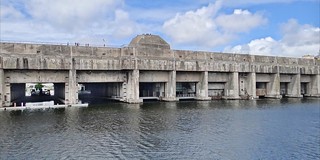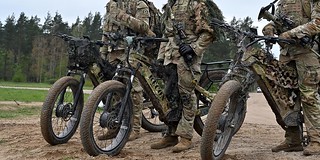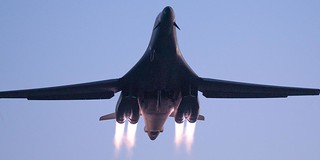The Battle of Najaf, 4-4-4: images of a combat full of Spanish courage
On April 4, 2004 (4-4-4) an important event took place in Iraq in which Spanish troops deployed in that country took part.
The sending of the Plus Ultra I and II Brigades to Iraq
On July 13, 2003, an Iraqi Government Council was established in Iraq, as the first step in the transition in the country after the overthrow of Saddam Hussein by the US invasion of that year. On August 14, 2003, the UN Security Council adopts resolution 1483, promoted by Spain, the United States and the United Kingdom and approved by 14 votes in favor and one abstention (that of Syria), which establishes a UN Assistance Mission in Iraq. Two weeks later, Spain deploys the Plus Ultra I Brigade in Iraq as a stabilization force, distributed in two locations: the "Spain" Base in Diwaniya, where the Brigade's headquarters is installed, and the "Spain" Base Al Andalus" of Najaf, considered a holy city by Shiism.

In December 2003 the Spanish contingent was relieved by the Plus Ultra II Brigade, made up of 1,300 Spanish soldiers of the Special Operations Group "C. L. Maderal Oleaga" XIX (GOE XIX, the former Special Operations Flag of the Legion, BOEL), a Light Cavalry Squadron (ELAC) of the Armored Light Cavalry Regiment "Farnesio" No. 12 and the Mechanized Infantry Regiment "Saboya" No. 6, in addition to a FAMET helicopter unit, an engineer unit, a transmission unit and a logistics support unit. The Brigade is also completed with 1,100 soldiers from El Salvador, Honduras and the Dominican Republic.

The withdrawal order
The victory of the PSOE in the elections held three days after the 11-M attacks seriously affects the mission: the first decision that José Luis Rodríguez Zapatero makes as soon as he reaches the government is to withdraw the Spanish troops from Iraq. The third rotation to relieve the Spanish contingent in Iraq is already underway, but its deployment is affected by the withdrawal order. Before that, one of the largest combats in which the Spanish military has been involved in recent decades occurs in Iraq.

A U.S. command's trip-up of the Spanish contingent
On October 31, four American Blackwater contractors are killed by Iraqi insurgents in an ambush in Fallujah. Their corpses are burned, mutilated and abused. The images go around the world. Two days later, Navy SEAL operators arrest Mustafa Yaffa Al Yacubi, lieutenant of Muqtada Al Sadr, a powerful Shiite Islamic cleric, in Nayak. Although the operation is carried out in an area under Spanish control , the US forces do not inform the Spanish command in advance and, in addition, US media point to the Spanish contingent as responsible for the arrest. It is a colossal trip by our allies to the Spanish troops when it is already known that the new socialist government plans to withdraw them.

The attempted assault of the 'Al Ándalus' Base by the Mahdi Army
On April 4 at noon, an uprising breaks out in Najaf, led by the so-called Mahdi Army, an Islamist militia led by Muqtada Al Sadr. The Iraqi Police are overwhelmed and have to take refuge in the "Al Ándalus" Base, then beginning an attempted assault on the Spanish barracks. During the attack, the Islamist militiamen use a nearby hospital to attack snipers the roof of the base. The perimeter of the base is defended by four Cavalry Scout Vehicles (VEC) from the "Farnesio" and four BMR-600 from the "Saboya". The foot personnel, including Colonel Alberto Asarta, commander of the base, faces the assault with his Heckler & Koch G36E ordinance rifles.

The Spanish contingent participates in the defense of the base along with troops from the Cuscatlán I Battalion of the Army of El Salvador, a small contingent of United States military personnel and several Blackwater contractors. During the fighting, in addition, Honduran military reinforcements and 60 members of the Rangers and US Special Forces join. After two hours of combat, American reinforcements arrive: two AH-64 Apache attack helicopters. The US command in Baghdad also offers two F-16s to attack the hospital from which the "Al Ándalus" Base is being shot at, but Colonel Asarta refuses, given the loss of innocent lives that this would mean between patients and hospital staff. Finally, a foot assault was chosen, managing to neutralize the Mahdi's snipers.

The heroic rescue of the Salvadoran detachment in the Najaf prison
During the attack, the BMR-600 of the "Saboya" carried out a heroic rescue of Salvadoran soldiers who had been isolated in the Najaf prison, after the desertion of the Iraqi police officers. Upon arriving at the prison yard, the Spaniards receive the news of the death of one of the Salvadoran soldiers: Natividad Méndez Ramos, only 19 years old. There are also five wounded. The Spanish armor evacuated the wounded Salvadorans first, as they did not have space in the BMR to transport the entire Spanish-American detachment. The commanding officer of the Spanish convoy, Ensign Jacinto Guisado, promises them to return. It seems a difficult promise to keep: the city is in chaos, and the vehicles have to dodge rifle fire and RPG rocket launchers.

On the second trip of Guisado's column to the Najaf prison, to fulfill their promise, the Spaniards had to shoot their way through, when they encountered resistance from two Iraqi vehicles. When they finally manage to return to the "Al Ándalus" Base, the newly rescued Salvadoran soldiers hug the Spaniards, through tears, to thank them for having saved their lives. For that heroic rescue, Asarta's column received six Crosses of Military Merit with a Red Badge. The same decoration was received by Colonel Asarta, by the defense organization that made up the base, and by the Sergeant Vergara, for his performance aboard one of the VEC.

A video with real images of the combats
The "Al Ándalus" Base endured a six-hour attack in which the Spanish contingent did not suffer any casualties. In the United States they would have already made a movie with a battle like this. In Spain we are still waiting - sitting - for them to make one. At the moment, we have this video that shows real images of the combats of that day:
---
Main photo: Soldier Zancada, of the Spanish Army, defending the roof of the 'Al Ándalus' Base during the Battle of Najaf on April 4, 2004 (source: General Alberto Asarta, published in the book 'Y al final, la guerra', by Lorenzo Silva and Luis Miguel Francisco).
|
Don't miss the news and content that interest you. Receive the free daily newsletter in your email: |
- Most read
- The United States Army shows its electric bicycles for reconnaissance missions
- The firearms used by the Pontifical Swiss Guard, the smallest army in the world
- The Saint-Nazaire submarine base, one of the last bastions of nazi Germany
- The infiltration of a group of Spanish explorers into the Russian aircraft carrier Minsk
- The brutal 'touch and go' of a Lufthansa Boeing 747 at Los Angeles Airport
- Eurofighter vs F-35: the opinions of professional pilots on these advanced fighters
- NATO highlights and shows the 'air power' of the Spanish aircraft carrier 'Juan Carlos I'

 ES
ES







Opina sobre esta entrada: